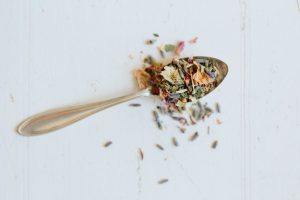The Naturopathic Co.

You're using an outdated browser. Please upgrade your browser to improve your experience.
SPEED READ>>
Phytonutrients provide protection to us in the same way they provide protection to the plant from harmful environmental factors and disease. There are perhaps more than 10,000 phytonutrients in our food supply. Different coloured foods provide different nutrient value to the body. Even small amounts of these phytonutrients in our diet, provides a significant impact. A diet filled with variety of phytonutrients will boost their effectiveness because when certain phytonutrients are combined, they have a more positive effect.
Phytonutrients are crucial for children (and adults) in maintaining good health. These plant-based compounds are what give fruit and vegetables their intense color and extraordinary nutrition, helping to lower inflammation and reduce the risk of cell damage.
We are uncovering more about phytonutrients and phytochemicals from plants every day, and learning more about how they specifically assist in boosting health. What we do know is that plant foods reduce chronic disease. When we are eating plant foods we tend to have lower rates of chronic disease which improves health parameters into old age.
Phenolics, alkaloids, carotenoids, phytosterols, organosulfur compounds, and nitrogen-containing compounds are all phytochemicals, which are the non-nutritive compounds in plants. There are thousands of these different phytochemicals; perhaps between 5000 to 10,000+ in our food supply.
Phytochemicals are within fruits and vegetables, but also within nuts, seeds, wholegrains, herbs, and spices.
Food is medicine and colour is medicine. Different coloured foods provide different nutrient value to the body. Even small amounts of these phytonutrients in our diet, provides a significant impact.
Does your child have colour deficiency in daily eating?
The Australian Dietary Guidelines recommends the following number of serves per day (1 serve = approximately ½ a cup):
| Toddlers | Vegetables and legumes | Fruit | ||||
| Girls and boys 1–2 years |
2-3 | 0.5 | ||||
| Girls and boys 2-3 years |
2.5 | 1 | ||||
| Children | Vegetables and legumes | Fruit |
| Girls 4-8 years | 4.5 | 1.5 |
| Girls 9-11 years | 5 | 2 |
| Boys 4-8 years | 4.5 | 1.5 |
| Boys 9-11 years | 5 | 2 |
| Adolescents | Vegetables and legumes | Fruit | ||||
| Girls 12-13 years | 5 | 2 | ||||
| Girls 14-18 years | 5 | 2 | ||||
| Boys 12-13 years | 5.5 | 2 | ||||
| Boys 14-18 years | 5.5 | 2 |
A well balanced intake from all food colours will provide optimal intake of phytonutrients.
Red
Contains lycopene, Anthocyanins. Reduces the risk of prostate, breast, and skin cancer; reduces the risk of heart attacks.
>>Include tomato-based products, watermelon, pink grapefruit, guava, raspberries, cherries, strawberries, cranberries, beetroot, red apples, red cabbage, red onion, kidney beans.
Orange
Contains beta-carotene, bioflavonoids. Boosts immunity, reduces risk for cancer, reduces risk of heart attacks, maintains strong bones/teeth, healthy skin helps maintain good vision.
>>Include carrots, sweet potatoes, pumpkin, cantaloupe, mangos, apricots, peaches, oranges, grapefruit, lemons, tangerines, clementines, peaches, papaya, apricots, nectarines, pears.
Green and yellow
Contains lutein, Zeaxanthin, Indoles, chlorophyll, Phytosterols. Helps maintain good vision, cholesterol reduction, anti-inflammatory, reduces the risk of cancer, reduces the risk of cataracts.
>>Include kale, spinach, leafy greens, romaine lettuce, broccoli, green peas, kiwifruit, honeydew, broccoli, cabbage, brussels sprouts, bok choy, arugula, swiss chard, turnips, rutabaga, watercress, cauliflower, linseed (flax), sesame seeds, fenugreek, oats, beans, lentils, alfalfa.
Indigo
Contains Anthocyanins and phenolics. Reduces the risk of cancer, powerful antioxidant, helps control high blood pressure, reduces the risk of heart attacks, reduces the risk of Alzheimer’s disease.
>>Include blueberries, blackberries, blue potatoes, blue carrots, purple grapes, black currants, elderberries, plums, prunes, raisins, eggplant.
A diet filled with variety of phytonutrients will boost their effectiveness because when certain phytonutrients are combined, they have a more positive effect.
Good synergistic food combinations:
Green Tea + Citrus: Citrus fruits help preserve the catechins in green tea
Turmeric + Black pepper: The anti-cancer activity of curcumin – the main phytochemical in the spice turmeric- increased by a factor of 1000 in the presence of piperine (in black pepper).
Turmeric and Green Tea: Has a synergistic effect on cancer cells
Chopped or crushed garlic: The anti-cancer compound diallyl disulfide is made when garlic is left to sit for 10 minutes after being crushed or chopped
Carrots
Broccoli
Brussel Sprouts
Kale
Watercress
Swiss Chard
Bok Choy
Rocket
Spinach
Cauliflower
Tomatoes
Strawberries
Blackberries
Red capsicum
Garlic
Always aim for colorful plates
Cooking reduces the phytonutrient content, so consume some foods raw and others steamed, which is preferred to boiling or frying.
Smoothies are a great way to hide plant foods for children who may not want to consume them.
Load up and include plants (vegetables, herbs, spices) in your child’s favourite meal such as spaghetti bolognese, lasagna, pizza.
Take the first steps and book your child’s initial consult here
Yvette is a qualified Melbourne-based Naturopath and Nutritionist, MINDD Practitioner, member of the Naturopaths and Herbalists Association of Australia, and Complementary Medicine Association. Yvette specialises in the treatment of conditions commonly affecting women and children, with a key interest in children’s digestive and neurological conditions, as well as women’s hormonal concerns, digestive issues, fatigue, anxiety, and skin concerns. Yvette consults in South Yarra, Melbourne, as well as Australia-wide via skype/zoom/phone.
The Naturopathic Co. Melbourne Naturopath 2020
Comments are closed.